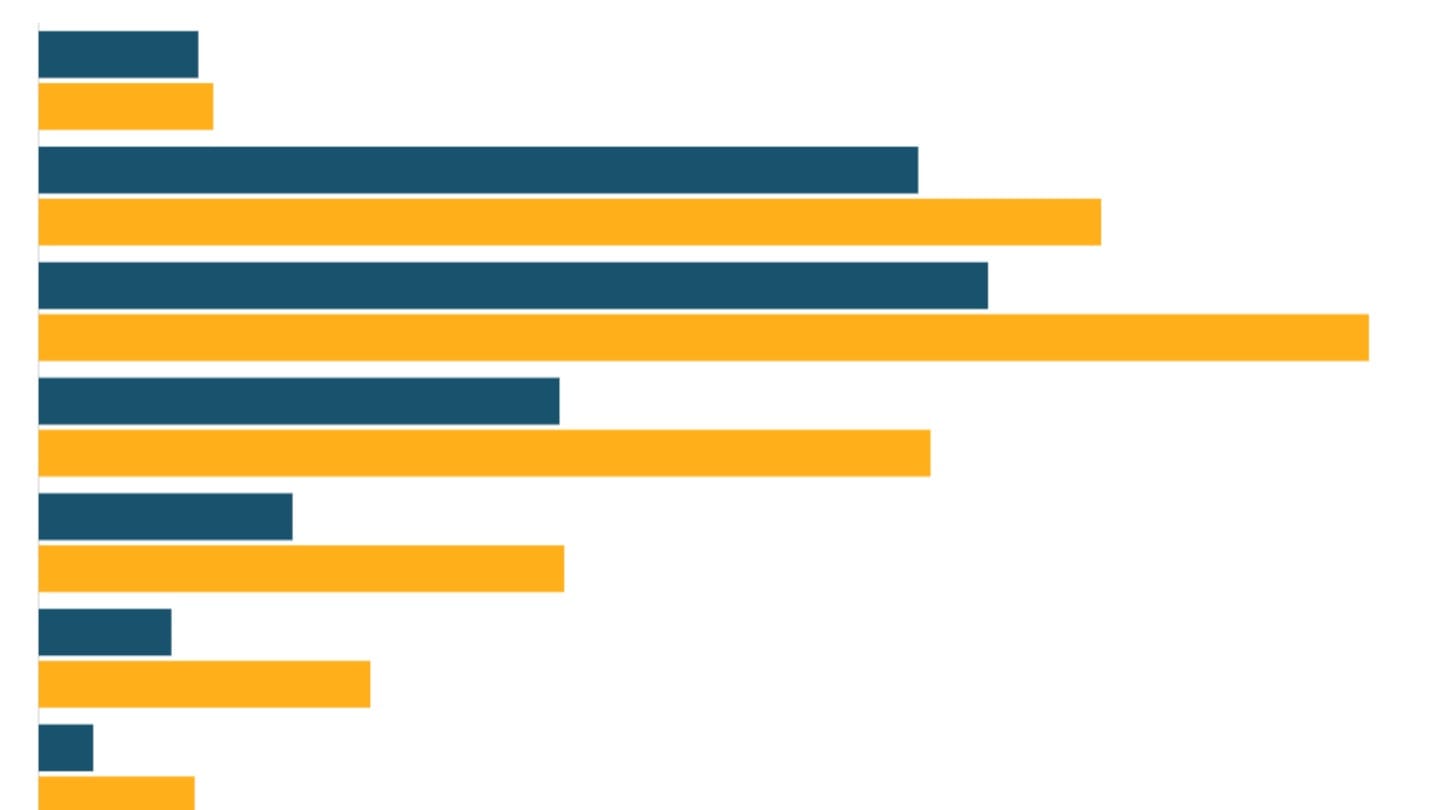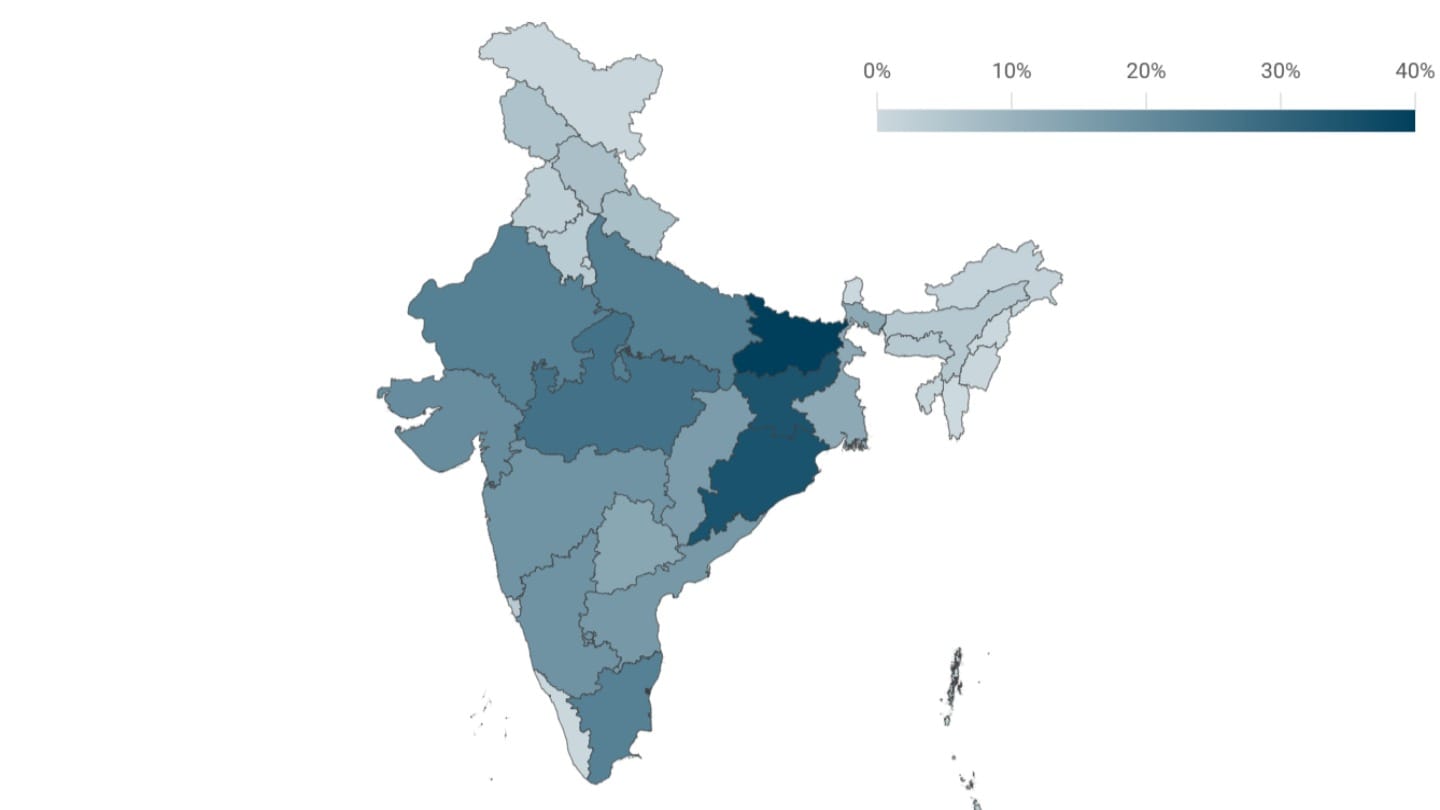Education levels in India
Over time, the share of the population that is illiterate has declined sharply. But few Indians go on to get a higher education.
Beyond basic literacy, many Indians go on to complete primary or secondary education, or go on to higher studies.
Completed education levels
As of 2023, the majority of Indians above the age of 25[1] were either illiterate or had been educated up to the primary level. Just over one in ten had completed a higher education programme.
Looking at the population by their age groups, however, shows that the level of educational attainment of Indians has improved substantially over time. While more than half of those who are in their sixties or older are illiterate, illiteracy rates among those now in their twenties are in the single digits.
However, there are still significant differences between socio-economic groups, and while all groups have made progress in education, the gaps between them are yet to close.
Illiteracy rates have fallen for both women and men, but gender differences persist. Decades of progress still separate men and women; illiteracy rates among women in 2020 are nearly equal to what they were for Indian men in the 1980s.
The differences between urban and rural India are even starker. Higher education is a largely urban phenomenon in India, where one in four adults[2] have had a higher education, while in rural India, the share is much smaller and has not grown substantially over time.
There are also significant differences between social groups. Indians who do not belong to a marginalised community are twice as likely to have a higher education as those belonging to a Scheduled Caste or Scheduled Tribe.[3]
Education data in India
There are two key sources of data when it comes to education in India - administrative data and survey data.
The departments under the Ministry of Education collect data on schools, colleges, universities, teachers, enrolment and educational and general infrastructure every year. These data originate at the level of an educational institution.
The second major source are surveys - mainly the nationally representative household sample surveys from the National Statistics Office (NSO), and the Census, conducted every ten years (no Census has been conducted in India since 2011). The NSO has conducted five surveys focusing on education from the 1980s to 2018[4]. They record indicators such as the status of enrolment, the level of completed education, reasons for not attending and so on.
Apart from surveys that especially focus on education, basic questions on the completed education level are covered by nearly all NSO surveys, including the Periodic Labour Force Survey, which are conducted frequently and provide the most recent data.
[1] For this section, we look at those above the age of 25 at the time of the survey, as they would be likely to have either completed their education or be in higher education
[2] Refers to those above the age of 25
[3] Scheduled Castes and Scheduled Tribes are among the most historically marginalised communities in India, and as a result have constitutional provisions for affirmative action
[4] The Ministry of Statistics and Programme Implementation maintains the unit level data for most of the NSO surveys on the microdata website.




